-
Contributing Member


Restored water chest
Hi all
I have been recovering rusty pieces of WW2 'crap', (as my wife likes to call them), for more than 20 years now, preserving them so they survive for many more years to come. Some of these relics are now very rare and you simply couldn't buy them from anywhere, basically because they just don't exist on the market. This makes my collection totally unique, which, coupled with the history of each item, makes the WW2 relics I recover incredibly important from an historical perspective.
Every now and again I will recover a number of exactly the same relic, which can sometimes lead me down the path of full restoration. This is only happens in very rare instances as I prefer my WW2 items to retain their relic look, and hence their history.
So with that in mind..........
I present a lovely Browning M1917 water cooled MG, Mark 1 water chest. Recovered more than 4 years ago from a British army dump site and sat in the garage waiting for me to get round to restoring it for all that time. I was cleaning out the garage a few days ago, (three trips to the dump!!! Why do I keep so much crap??), and spotted it, covered in cob webs. Decided there and then enough was enough and to get the poor thing restored.
army dump site and sat in the garage waiting for me to get round to restoring it for all that time. I was cleaning out the garage a few days ago, (three trips to the dump!!! Why do I keep so much crap??), and spotted it, covered in cob webs. Decided there and then enough was enough and to get the poor thing restored.
So I did 
It was given a good scrub with a wire brush attachment on my electric drill, to remove all the loose rust and what was left of the paint. Prior to removing the paint, I matched it as closely as possible to a colour I could source in spray cans, (the pictures don't do it justice, as the colour was an exact match!.....honest  ). I then cleaned the box with alcohol to remove all dust and oil. Then I cut a piece of garden cane big enough to go across the internal width of the can, and hung it from this bit of cane in a suitable location. I covered the brass parts with masking tape and cut the tape with a Stanley knife to get a clean line around the brass. The stencil was done by printing the wording in a military stencil font on card, then cutting out the lettering with a craft knife.
). I then cleaned the box with alcohol to remove all dust and oil. Then I cut a piece of garden cane big enough to go across the internal width of the can, and hung it from this bit of cane in a suitable location. I covered the brass parts with masking tape and cut the tape with a Stanley knife to get a clean line around the brass. The stencil was done by printing the wording in a military stencil font on card, then cutting out the lettering with a craft knife.
The water chest was missing the top cap and handle though, but fortunately I had a rusted-to-hell-and-back Mk 2 chest also in the garage. After checking to see if it was savable, (it wasn't), I attacked it with a hammer and removed the top cap and handle. I then left the cap/handle to soak in citric acid for 24 hours, cleaned it up, freed the double hinge with lots of WD40, swearing and a claw hammer, then ground the corrosion off the threads with my Dremel.
Whilst obviously ground dug, the cap and handle really finished the piece off. So, here you go.......
What the chest looked like before I began, after application of primer, then top coat, then the stencil, put the cap on, make sure it works..... (very pleased with the results).
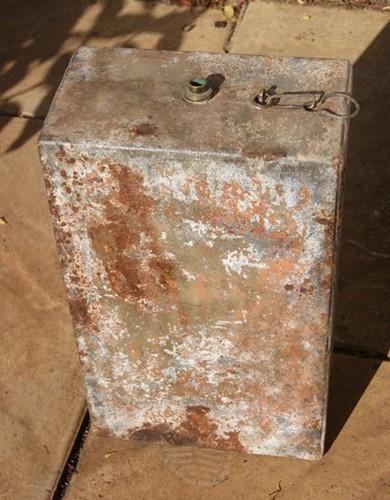
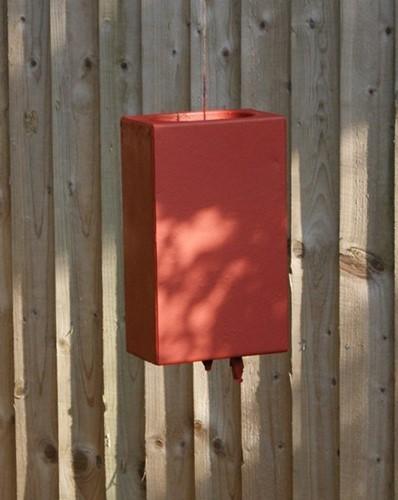
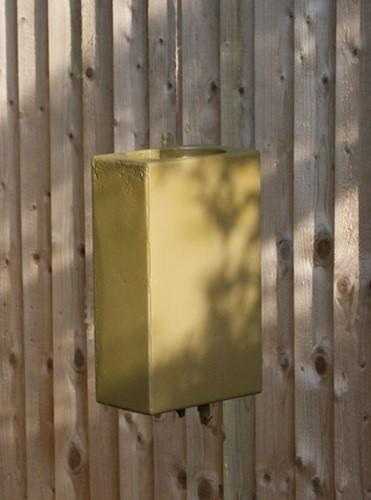
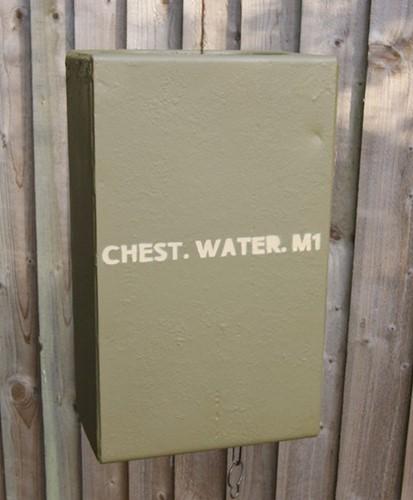
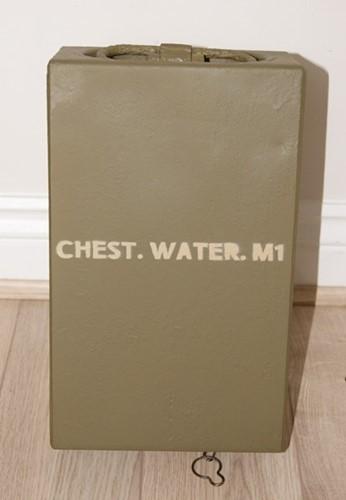
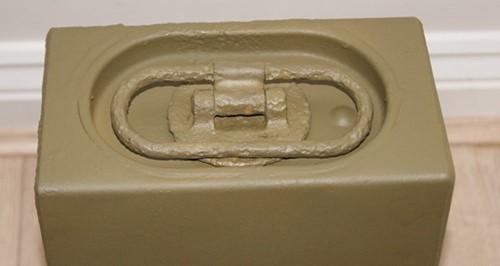
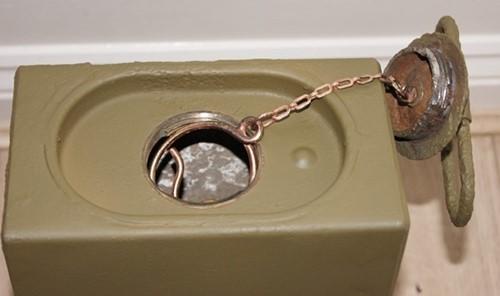
What's the verdict? I have 3 more of them, one of which is 'restorable' so, depending on your considered view, I may do another one 
RRPG
Information
 |
Warning: This is a relatively older thread
This discussion is older than 360 days. Some information contained in it may no longer be current. |
|
-
The Following 2 Members Say Thank You to RRPG For This Useful Post:
-
08-14-2015 03:38 AM
# ADS
Friends and Sponsors

-
Legacy Member

You did a nice job restoring that condensing can. 
 I have seen them sell for $300 here.
I have seen them sell for $300 here.
-
-
-
Advisory Panel


Looks pretty good. Glad you got round to it.
-
-
-
-
Advisory Panel


Well worth doing if they can be restored. That's what we were trying to tell you in earlier threads.
-
-
Contributing Member


-
-
Advisory Panel


-
army dump site and sat in the garage waiting for me to get round to restoring it for all that time. I was cleaning out the garage a few days ago, (three trips to the dump!!! Why do I keep so much crap??), and spotted it, covered in cob webs. Decided there and then enough was enough and to get the poor thing restored.
). I then cleaned the box with alcohol to remove all dust and oil. Then I cut a piece of garden cane big enough to go across the internal width of the can, and hung it from this bit of cane in a suitable location. I covered the brass parts with masking tape and cut the tape with a Stanley knife to get a clean line around the brass. The stencil was done by printing the wording in a military stencil font on card, then cutting out the lettering with a craft knife.























 PM
PM










